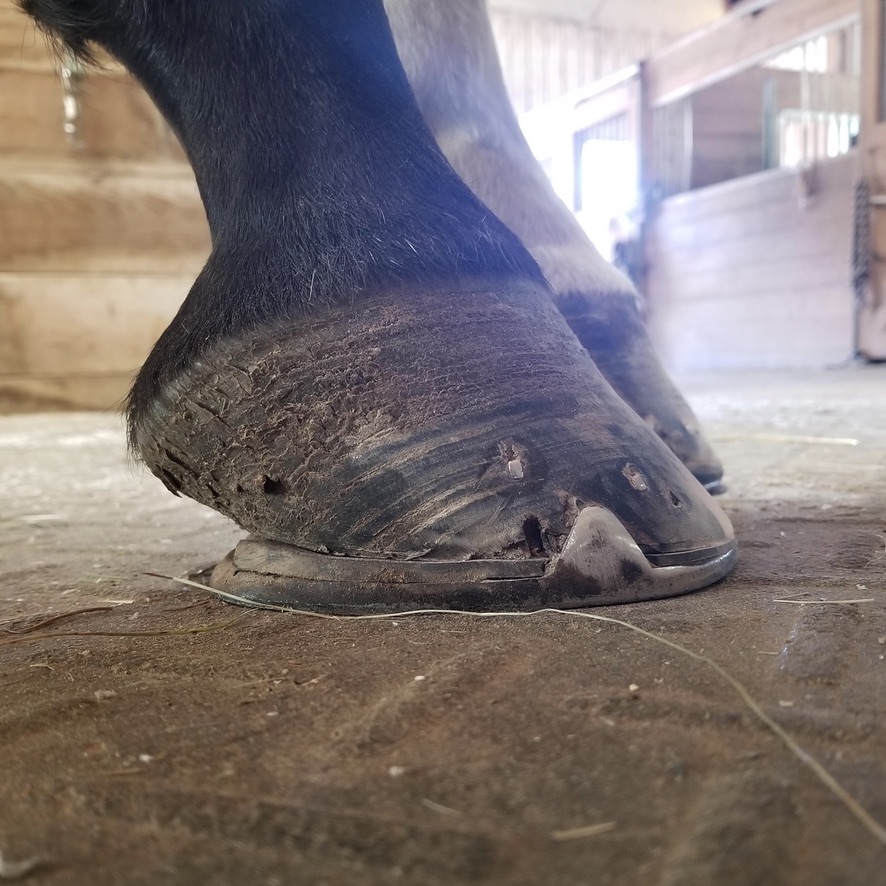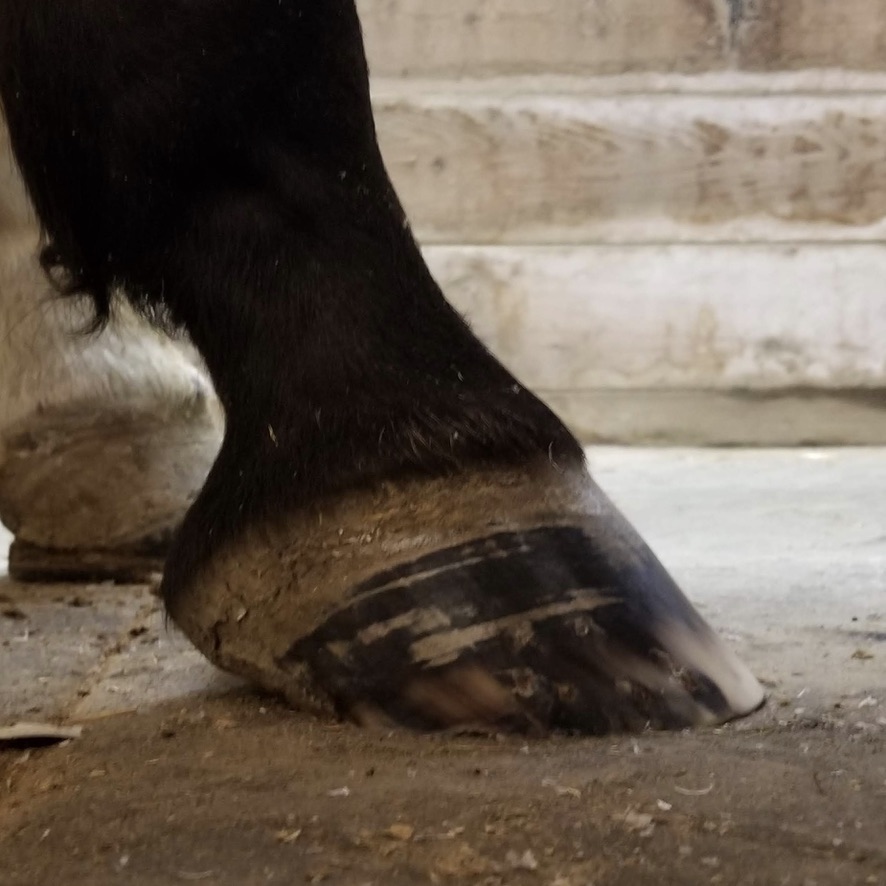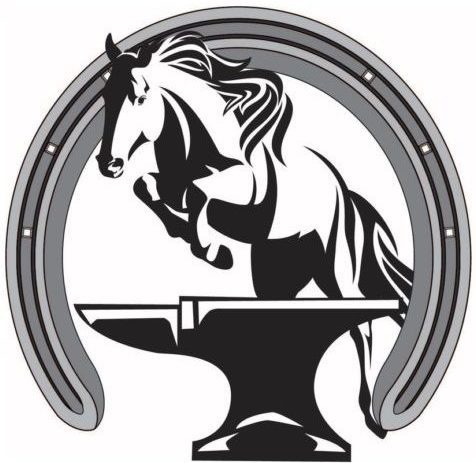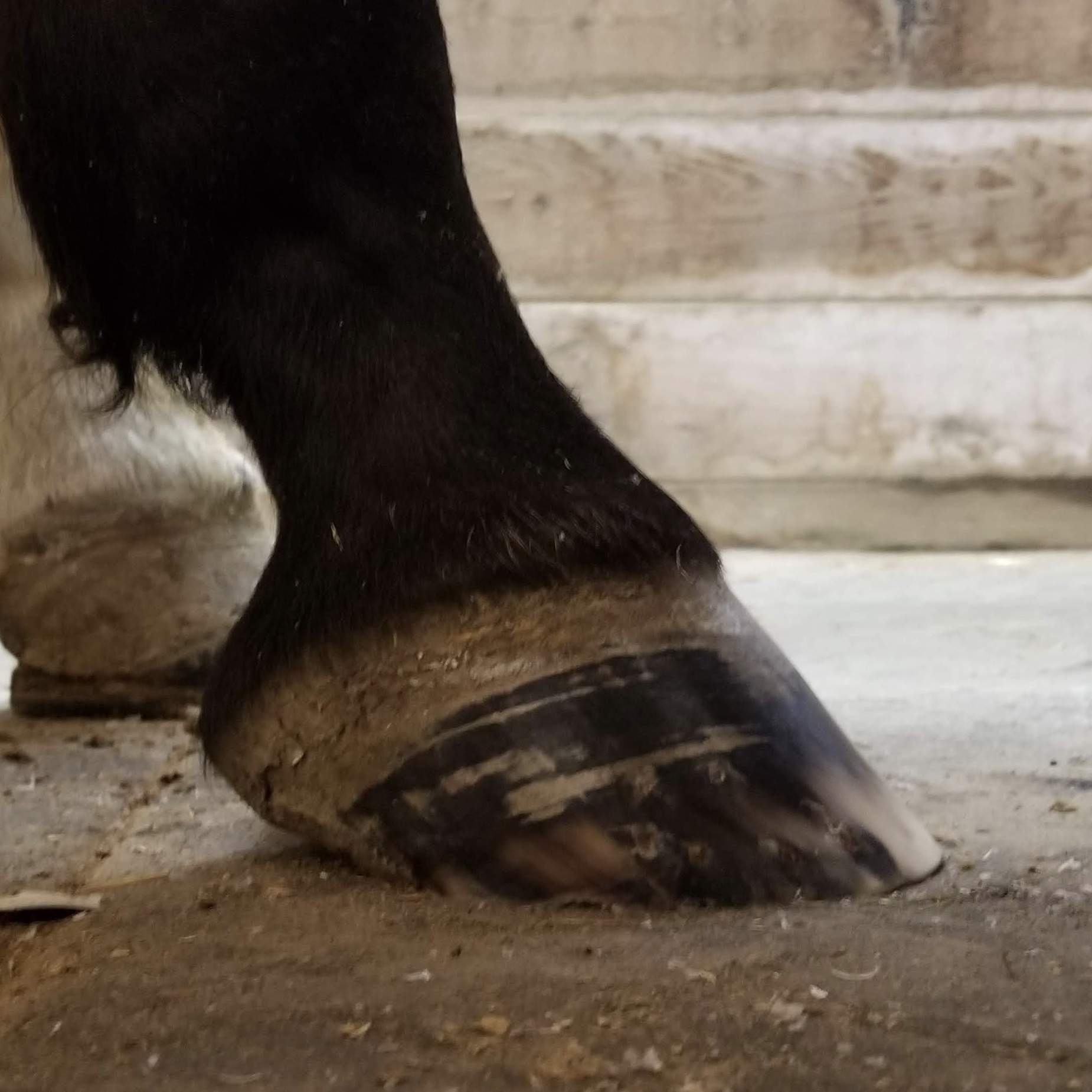While it would be nice if every horse had perfect feet, we all know that is not the case. Unfortunately, there are many issues with horses’ hooves and conformation, one of them being upright or club feet. There are times these two terms are used interchangeably; however, they describe very different conditions. We will explore upright and club feet in later blog posts but for this post we want to explore a common issue with both conditions – the opposing limb.
When a horse has an issue such as a club foot or any unilateral condition that results in chronic low grade pain or discomfort, they will have a tendency to overload the opposing limb. On a few horses this does not become much of a problem; however, for many horses as the opposite limb is overloaded. Over time it will generally result in the horn of the hoof being compressed and crushed at the heel. Eventually the hoof will end up with a negative palmar angle. While most when faced with a club foot or similar issue will almost exclusively focus on that issue, I have found that if managed well, the club foot will not be the issue that makes the horse the most lame, rather it will be the “good” foot that ends up being the largest problem in the long run.
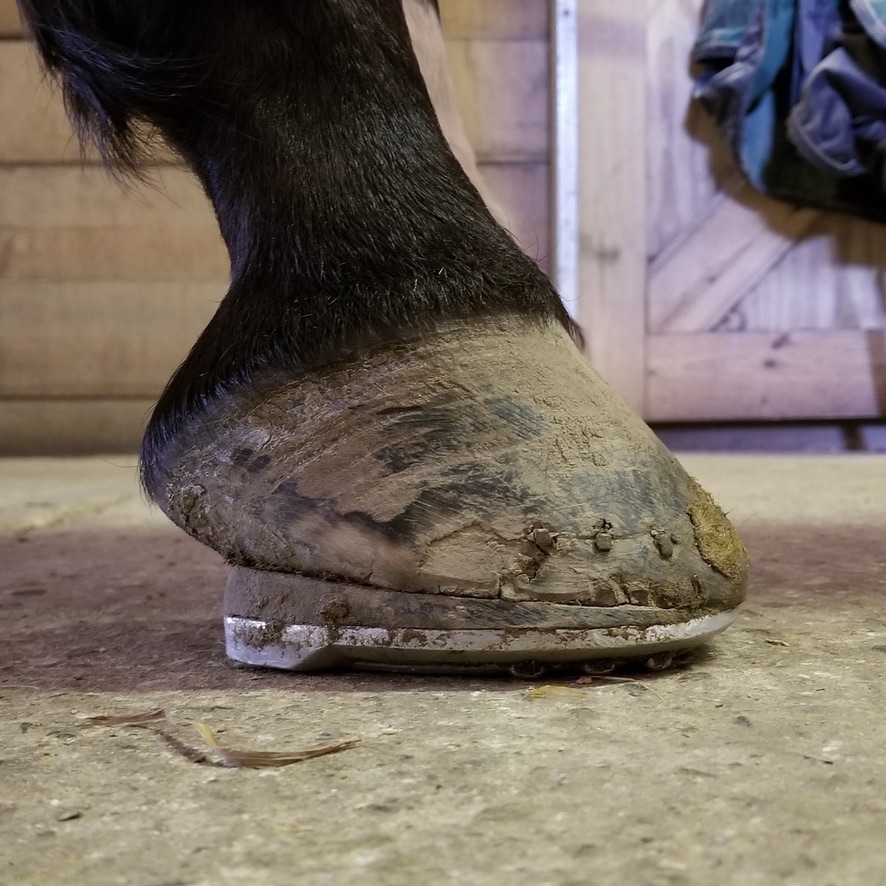
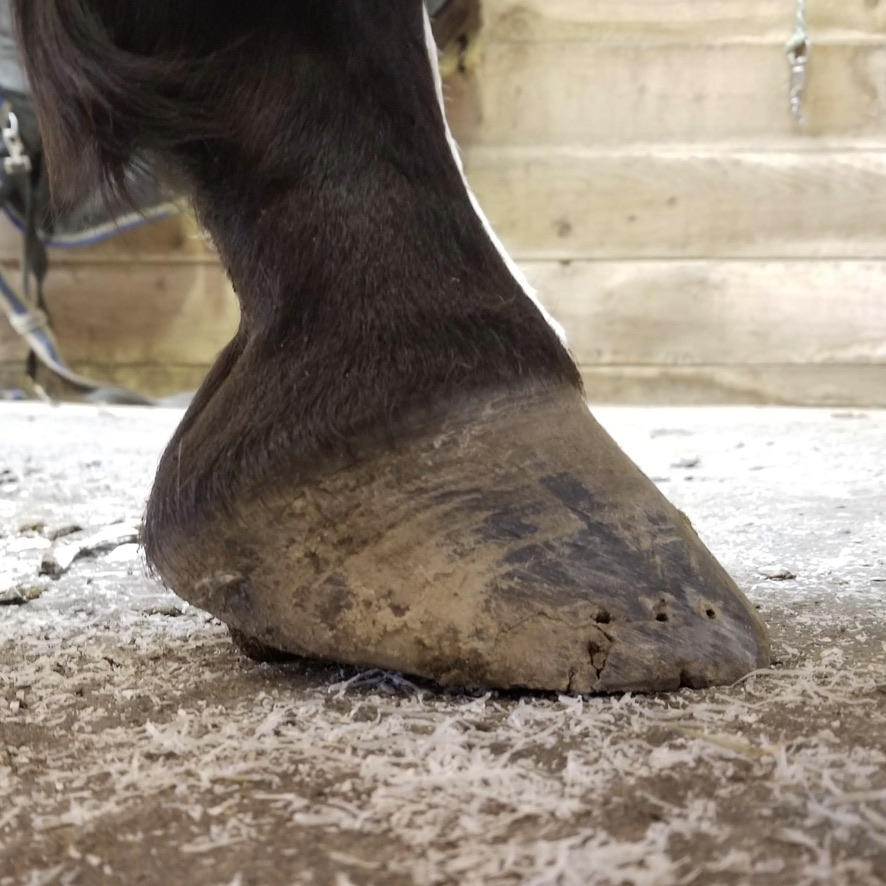
The case study presented in this blog was first presented when the horse moved back to Indiana from Texas. It had been treated for a club foot that was due to contraction deep flexor muscle and tendon. The horse had been fitted with wedge pads and aluminium PLR shoes. When first presented the horse was as sound as it had been for some time but was certainly not perfect. Fortunately we were able to shoe at a local vet clinic so that the horse could be examined and before, during, and after radiographs could be taken. The club foot was already being managed well so not many changes were made, though the shoe was replaced with a handmade.
On the low foot, the vet and I were concerned about the overloading especially as the frog was displacing distally to the point the heels of the foot no longer touched the ground when the horse was barefoot. If the horse was left like it was the foot would continue to displace and become more crushed. With the foot now having a negative palmar angle, it meant it would be more susceptible to tendon, ligament, and navicular problems. We decided that supporting the foot utilizing the frog would be the best solution in this case. A steel heartbar was used; however, due to the prolapsed nature of the frog, a wedge rim pad was used to bring the shoe to the same plane as the frog.
There are several options to consider using when we need to support a hoof using the frog and/or sole. Typical effective options include but are not limited to: heartbar shoes, pour in pads, impression material, or some combination of the above. In a later blog post we will discuss the different properties of these materials.
After a couple shoeings in the new package we were able to remove the wedge pads from the heartbar as the frog was back to being on a normal plane with the rest of the foot and the heels were back to being much stronger. While not totally ideal, the foot is in a much better condition and the horse is more comfortable now than before. The goal will be that the foot becomes strong enough to not need quite as much support.
At this point the horse is more comfortable than it has been in the past. In summary, by not neglecting to support the opposing limb on a horse with a chronic unilateral condition such as clubfoot, we can keep the horse sound for longer and hopefully lessen the chance of catastrophic injury due to a crushed heels/broken back axis.
